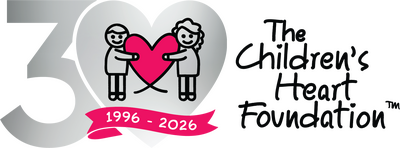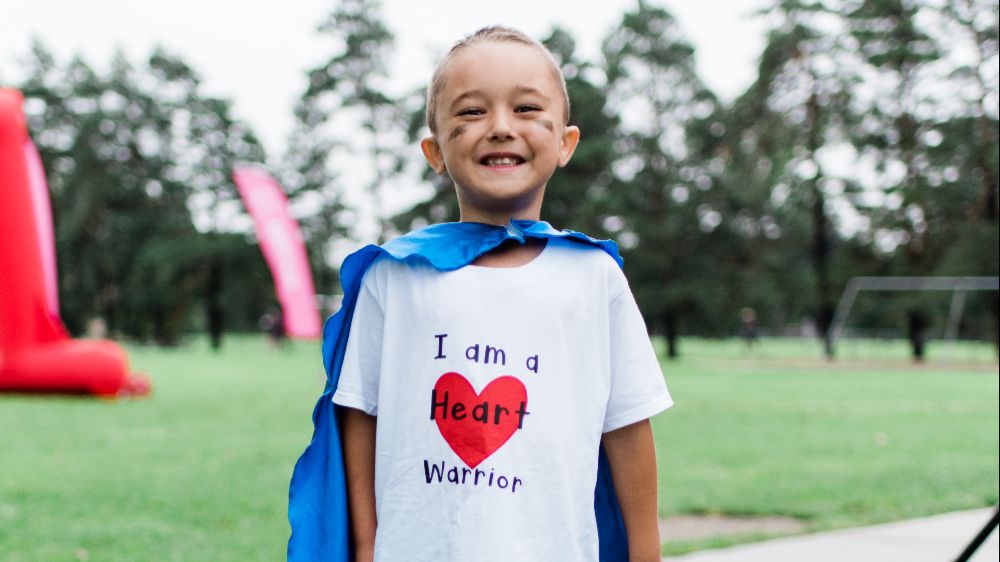Research Grant Program Guidelines
The mission of The Children’s Heart Foundation is to advance the diagnosis, treatment, and prevention of congenital heart defects (CHDs) by funding the most promising research.
Using this Document:
These program guidelines offer an introduction to The Children’s Heart Foundation policies, information needed to review your grant proposal, and instructions for completing the application. These guidelines should serve as a comprehensive resource for prospective and current grantees in The Children’s Heart Foundation Research Grant Program. It is the responsibility of all applicants and grantees to review and utilize the information in these guidelines.
Timeline:
- April 12, 2024 – Independent Call for Research Proposals opens
- May 22, 2024 – Letter of Intent due by 5:00pm CST
- June 14, 2024 – Applicants notified as to whether or not they may submit a full application
- September 11, 2024 – Full Application (invite only) due by 5:00pm CST
- December 16, 2024 – Applicants notified as to a decision regarding funding
- January 2025 – Funds released for awardees
The Children’s Heart Foundation will acknowledge receipt of proposals via email within 10 days of submission. Investigators not receiving funding will be notified by the end of December 2024.
Funding Limitations
No single project may receive more than $150,000 in funds during any calendar year for CHF’s Independent Research Award. Current award recipients must wait one year (12 calendar months) before submitting a new proposal.
The recipient of any grant from The Children’s Heart Foundation must use the funds awarded for the specific purpose as originally intended and outlined in their application. The Children’s Heart Foundation requires that a detailed accounting of all funds—along with a follow-up progress report—be submitted no more than one year from the date of the award (see below). Any funds not used in the manner specified must be returned to The Children’s Heart Foundation. If funding for the same project is secured through another agency, funds must be returned to The Children’s Heart Foundation upon receipt of funds from the other agency. Requests for The Children’s Heart Foundation funding should be submitted prior to securing commercial investment or support.
General Details:
- The Children’s Heart Foundation issues one call for proposals per year
- Applications are accepted from beyond the United States.
- English is the only language to be used.
- Only complete documents will be reviewed.
- Incomplete documents will not be considered.
- Once the application is complete, please submit using The Children’s Heart Foundation online portal: https://proposalcentral.com/GrantOpportunities.asp?GMID=273
- Do not attach an appendix to the application. Appendices will not be considered.
Application Instructions
Applications should include all items listed under “Specific Instructions.”
Face Page
TITLE OF PROJECT
Please observe the size limitation of the box and limit the title to two lines.
NAME OF PRINCIPAL INVESTIGATOR (PI)
Provide the full name of the PI responsible for the scientific conduct of the study.
DEGREE(S)
List up to the three highest degrees earned by the PI.
ACADEMIC RANK/TITLE
Please list the current academic rank or title of the PI.
ADDRESS
List the address of the PI to be used for all correspondence, including city, state, nation, and zip code.
TELEPHONE / FAX / EMAIL
Supply information to be used for all correspondence (may be home or work numbers)
DATES OF PROPOSED PROJECT
Please indicate the proposed start and finish date for this project.
REPRESENTATIVE WORK
Please attach copies of up to three of your most representative works.
Lay Summary
All applications for research funding will be assessed for their potential impact on the research-minded mission of The Children’s Heart Foundation. This assessment is based primarily on the lay summary, which must show mission impact to a lay reviewer during the peer review process. Describe your work in a way that can be understood by people who do not have scientific or medical backgrounds. Be clear and avoid technical and scientific terms when possible. Lay summaries should be 250 words or longer.
Funding Requested
Please indicate funding requested for the first and second year of the project and total funding required to complete the project.
Other Funding Sources
Available funding information is required for all applications and is used to check for alternative or overlap issues between the proposed research and other current or pending projects. List all research project support available to you (active, approved, or pending) for funding. Include NIH project grants, NIH K awards, portions of NIH program projects, NIH contracts, contracts from industry, grants from other non-federal health agencies, and any funds available to you through other investigators as well as departmental/institutional support.
Research Plan
The research plan should be organized according to the following format:
1. SPECIFIC AIMS
List the broad and long-term objectives of the project. Describe concisely and realistically what the specific research described in the application is intended to accomplish and any hypotheses are to be tested. Recommended: 1 page
2. BACKGROUND & SIGNIFICANCE
Briefly sketch the background of the present proposal. Critically evaluate the existing knowledge and specifically identify the gaps in the knowledge that your project is intended to fill. State concisely the importance of the research described in the application by relating specific aims to broad long-term objectives. Relate the relevance of the research to the diagnostic and/or treatment of congenital heart defects. Recommended: 1-2 pages
3. PRELIMINARY STUDIES
For new applications, include a report of the PI’s preliminary studies related to the studies in this application. This should establish the experience and competence of the investigator to pursue the proposed project. For renewals, submit a project report for this section (see below).
4. RESEARCH DESIGN & METHODS
Describe the research design and the procedures to be used to accomplish specific aims of the project. Include how the data will be collected, analyzed, and interpreted. Describe any new methodology and their possible advantages over existing methodologies. Discuss potential difficulties and limitations of the proposed procedures and alternative approaches to achieve the aims. Provide a tentative timetable for the investigation. Please address any procedures, situations, or materials that may be hazardous to personnel, and precautions.
Include sufficient but concise information to facilitate an effective evaluation without having to review any previous application(s). Be specific and informative and avoid redundancies. Reviewers often consider brevity and clarity in the presentation to be indicative of a focused approach to the research objective and the ability to achieve specific aims of the project.
Recommended: While there is not a specific page recommendation for this section, the maximum number of pages allowed for Parts 1-4 is 12 pages, including all tables and figures. Do not attach appendices for tables and/or figures.
Detailed Budget for the Project
The application includes a budget form to detail costs of the project and requested funding.
WHAT IS INCLUDED:
Only direct costs will be considered for funding. A list of non-allowable costs is detailed below. If the project is intended to proceed through multiple years, please complete a budget form for each year of anticipated funding, noting the year (i.e., 1, 2, 3…).
Salary support (including fringe benefits if required by the institution) for the PI or co-investigators, including pre and post-doctoral students, is allowable up to 10% of the budget. For example, in year 1, up to $15,000 can be divided among the PI and co-investigators.
Salary for other personnel, such as laboratory technicians, biostatisticians, and database managers is generally allowable if justification and documentation is provided that the project could not be completed without these employee’s help and expertise. Salary support for these research team members is not included in the 10% cap for the PI and co-investigators detailed above.
WHAT IS NOT INCLUDED:
Non-allowable costs are outlined below. This list is not exhaustive.
- Alteration or renovation of lab/office space
- Indirect costs
- Audiovisual materials
- Insurance
- Audit costs
- New construction
- Communications
- Conference grant costs
- Publications**
- Travel expenses
- Entertainment costs
- Taxes
- Tuition
- Fundraising
**May be allowable if work to be published is supported by The Children’s Heart Foundation grant and if charges are levied impartially on all papers published by the journal. The cost for reprints without covers is allowable. If the journal only provides reprints with covers, additional costs may be allowable.
Human and Animal Subjects
Human Subjects
Regulations for the protection of human subjects provide a systematic means, based on established and internationally recognized ethical principles, to safeguard the rights and welfare of individuals who participate as subjects in research activities. Regulations require that applicant organizations establish and maintain appropriate policies and procedures for the protection of human subjects.
Briefly describe the proposed involvement of human subjects in the work to be conducted, including the characteristics of the population, the anticipated number of participants, the age range, health status, and rationale for the use or exclusion of any specific subpopulation. Indicate if specimens will be taken from individuals, or if specimens exist, and identify if records or dates will be used. Describe plans for the recruitment of subjects and the consent procedure to be followed. Please note if recruitment bias is likely, and if so, what steps will be taken to limit the bias. State if the Institutional Review Board (IRB) has either approved the project or authorized a modification or waiver of consent procedure. Discuss why the risks to human subjects—in relation to potential benefits—are reasonable and acceptable.
Animal Subjects
Provide a detailed description of the proposed use of animals, identifying species, sex, origin, age range, and numbers of animals to be used. Justify the use of animals, including the choice of species and numbers to be used. Provide information on veterinary care of animals and the facilities available. Outline procedures that will be used to minimize discomfort, distress, pain, and injury to the animals. Describe the use of analgesia and anesthesia to be used and the method of euthanasia to be used.
Biosketches
The principal investigator and any key collaborators should submit a NIH biosketch that if formatted per current NIH giidelines: https://grants.nih.gov/grants/forms/biosketch.htm. Please limit the biosketch to five pages.
IRS 501(c)(3) Form
As part of your application, have the financial officer at your institution submit one copy of the 501(c)(3) form or letter outlining the tax-exempt status of the institution.
NAME & ADDRESS OF ADMINISTRATIVE FINANCIAL OFFICER
Please list the administrative financial officer responsible for overseeing grant monies for the applicant’s institution. The original signature of this official is required.
NAME & ADDRESS OF DEPARTMENT CHAIRMAN
Please list the Department Chairperson for the applicant. If the PI is the department chairperson, type “Same as PI.” Chairperson’s original signature is required.
PRIMARY INVESTIGATOR ASSURANCE
The PI must sign the assurance “oath” for honest scientific conduct.
Funding Follow-up Request
At the end of each funding year, The Children’s Heart Foundation requires a 2-3 page progress report and detailed accounting of all monies used. This report should summarize the research accomplished based on stated specific aims.
Publication Information
Please alert The Children’s Heart Foundation of abstracts or publications that result from this funding as soon as possible. Within publications, please indicate the support of The Children’s Heart Foundation by including a statement such as “Funded (in part) by a grant from The Children's Heart Foundation.”
Contact Details:
If you have questions regarding your application, please contact:
The Children’s Heart Foundation
5 Revere Dr., Suite 200
Northbrook, IL 60062
Email: ResearchGrants@ChildrensHeartFoundation.org
To withdraw an application, please contact ResearchGrants@ChildrensHeartFoundation.org


